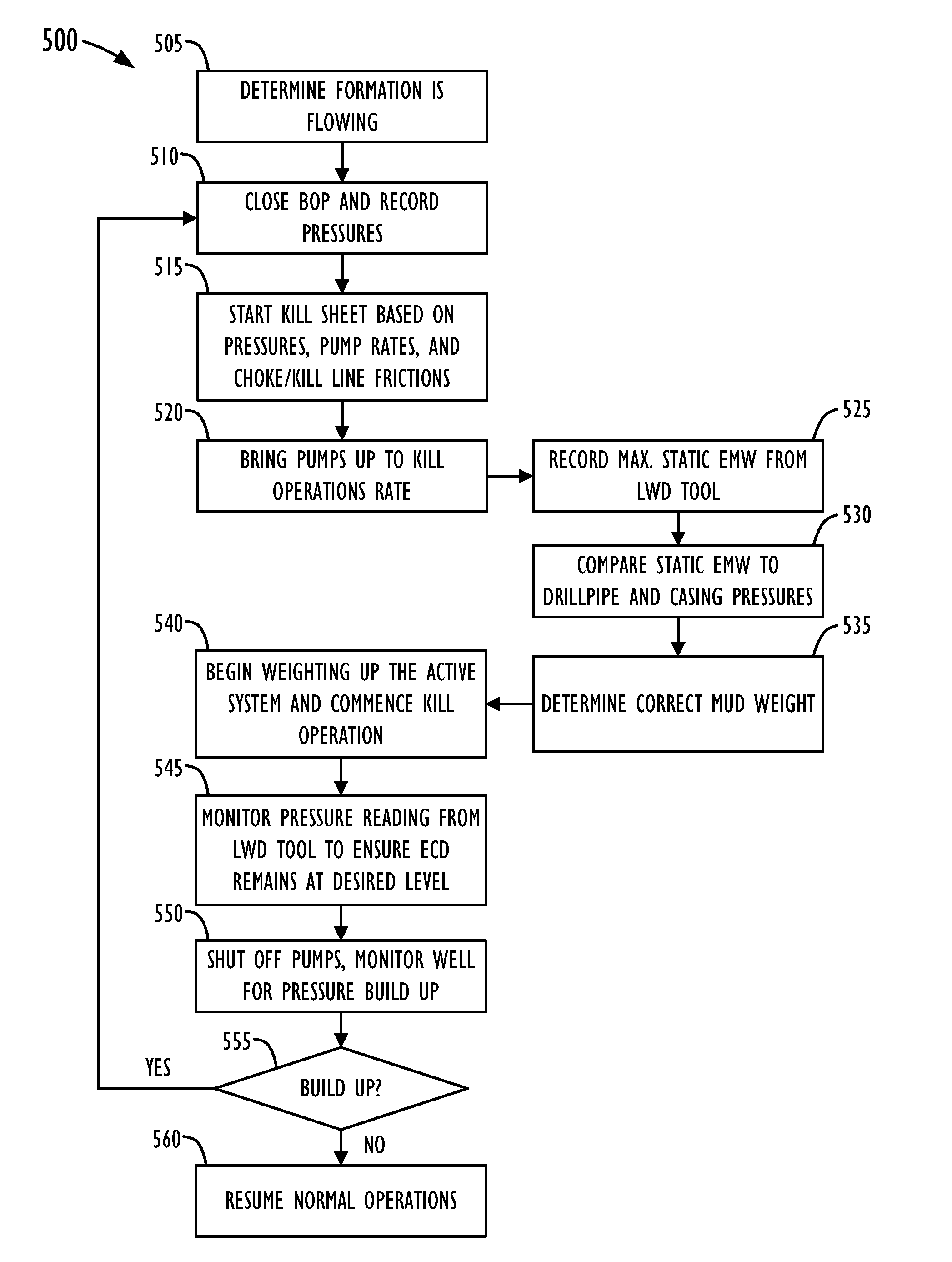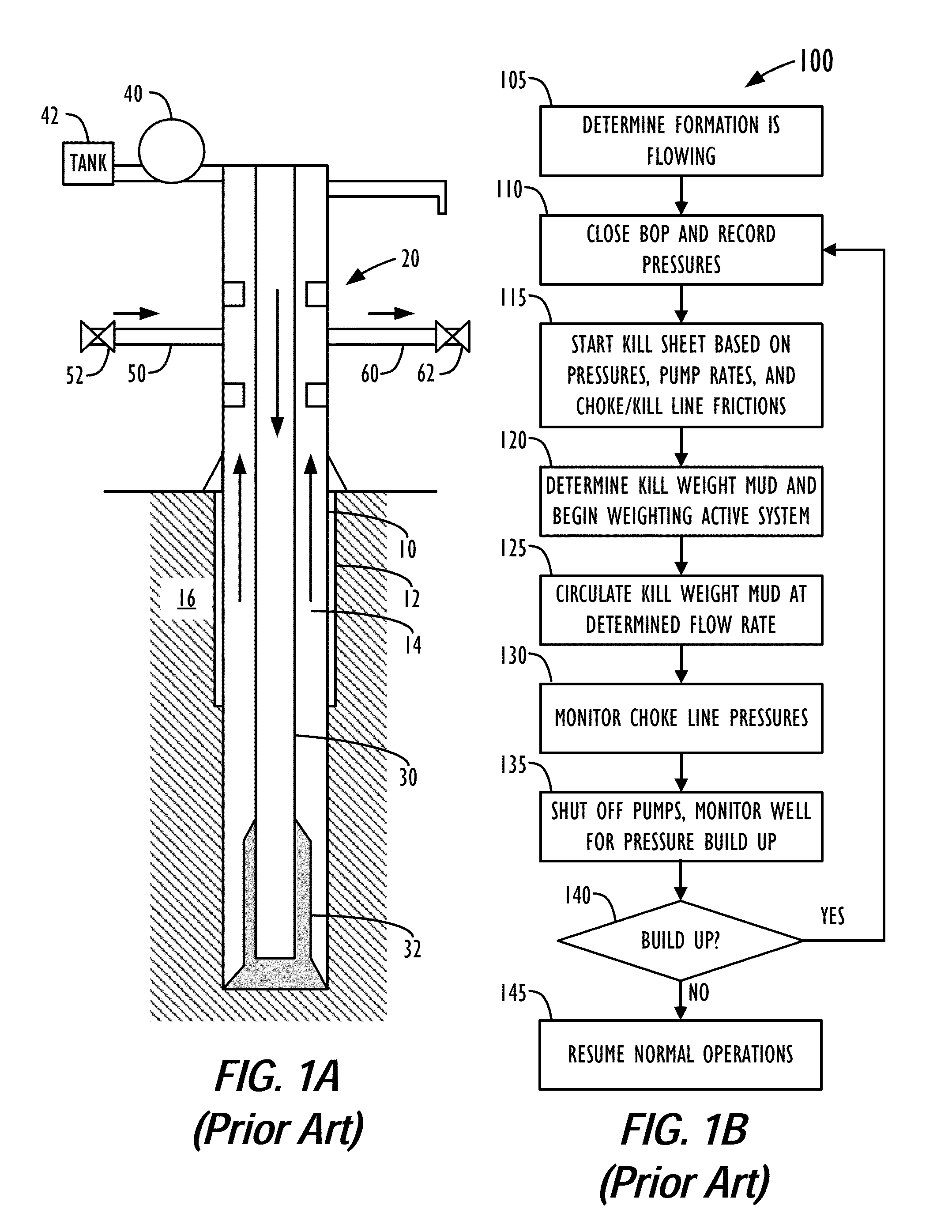System and method for obtaining and using downhole data during well control operations
a technology well control operations, applied in the field of system and method for obtaining and using downhole data during well control operations, can solve the problems of loss of well control, damage to operation, and mud to be los
- Summary
- Abstract
- Description
- Claims
- Application Information
AI Technical Summary
Benefits of technology
Problems solved by technology
Method used
Image
Examples
Embodiment Construction
[0031]FIG. 2A illustrates a drilling system having a well control system 200 according to one embodiment of the present disclosure. The well control system 200 includes analysis tools 210, surface sensors 220, and Logging While Drilling (LWD) tools 230. The analysis tools 210 include, but are not limited to, computers, software, data acquisition devices, rig personnel, etc. The LWD tools 230 are part of a tool string on the drill pipe 30 that can be used for standard logging or measuring while drilling and that can also be used in well control operations according to certain teachings of the present disclosure. Other elements of the drilling system shown are similar to the standard components known in the art.
[0032]FIG. 2B shows portion of the tool string having several LWD tools 230. As shown, these tools 230 include a pressure modulated telemetry module 240, a battery module 260, and a bore annular pressure module 270. In one embodiment, the LWD tools 230 can be part of a hostile-...
PUM
 Login to View More
Login to View More Abstract
Description
Claims
Application Information
 Login to View More
Login to View More - R&D
- Intellectual Property
- Life Sciences
- Materials
- Tech Scout
- Unparalleled Data Quality
- Higher Quality Content
- 60% Fewer Hallucinations
Browse by: Latest US Patents, China's latest patents, Technical Efficacy Thesaurus, Application Domain, Technology Topic, Popular Technical Reports.
© 2025 PatSnap. All rights reserved.Legal|Privacy policy|Modern Slavery Act Transparency Statement|Sitemap|About US| Contact US: help@patsnap.com



